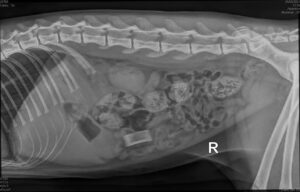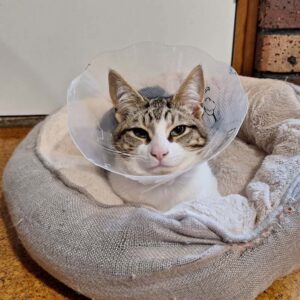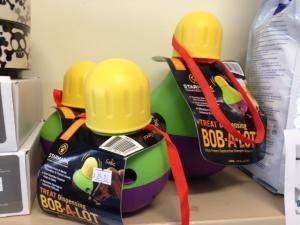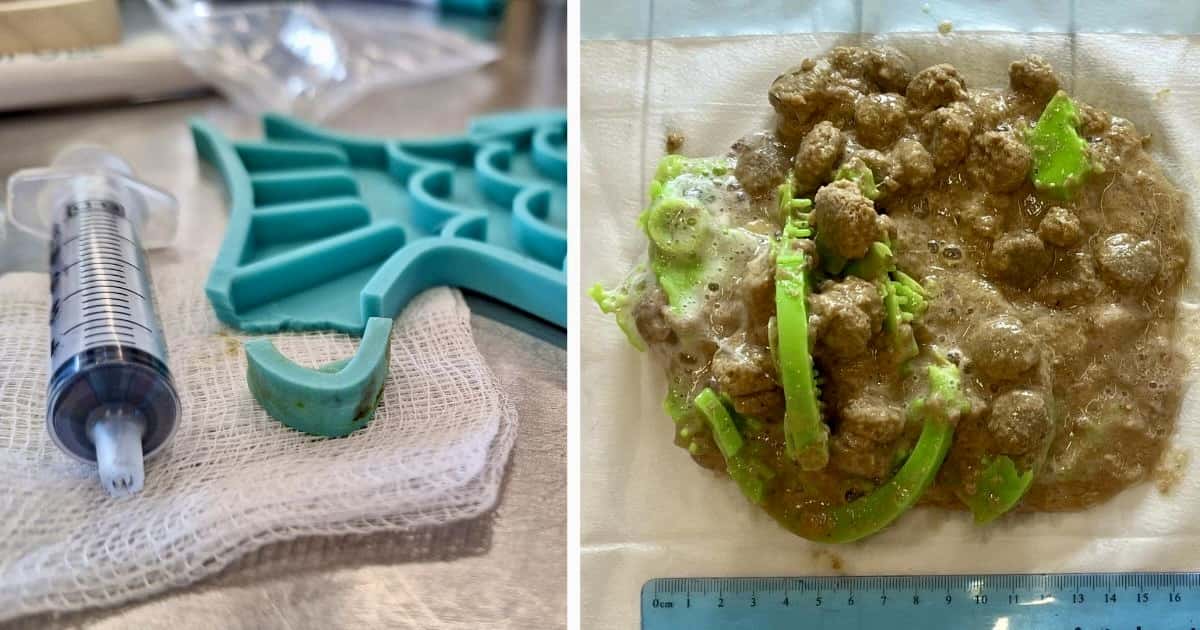Over the past five years, I have watched lick mats become one of the standard tools for treating anxiety and boredom in dogs and cats. That’s especially true for the branded version LickiMat®.
They are a great help, and I’m not going to tell you not to use them. But I want you to be careful.
What Is A Lick Mat?
A lick mat is a textured flat surface made out of rubber, usually with suction cups to attach it to the floor. The pattern on the top is designed to trap food and make it hard to eat quickly. The aim is to get dogs and cats to spend their time in licking instead of other unwanted behaviours, or to alleviate boredom and anxiety. Unlike other slow feeders, licky mats promote licking behaviour, instead of food seeking or foraging.
Uses For A LickiMat
The uses being promoted for the LickiMat® on their website include:
- Entertainment & distraction
- Reduction of anxiety & stress
- Boredom buster
- Slow feeding
- Raw feeding
- Environmental enrichment
- Improving oral health
Some of these uses make a lot of sense. A lick mat is a great way to get a dog to tolerate unpleasant situations like bathing, grooming, nail clipping and vet visits. That’s only so long as your dog is highly food-motivated.
You could also use it as an aid to crate training and getting your dog accustomed to car trips. It’s also a great way to alleviate stress in temporary situations, like fireworks and thunderstorms, or owners leaving the house.
So what’s the problem? Firstly, some of the claims make little or no sense.
Do Lick Mats Improve Oral Health?
LickiMat’s manufacturers claim that by stimulating saliva production it can clean the tongue, teeth and gums. Well, as someone who is well-acquainted with the literature on what actually keeps pets’ mouths clean, this statement lacks any basis in fact.
In fact, the sorts of treats being used on these mats should logically make periodontal disease worse, not better. Always remember that periodontal disease in dogs and cats follows the same course as it does in humans: you wouldn’t expect your teeth to be better by licking peanut butter off a rubber tray either.
What about the claim that scraping the tongue freshens your pet’s breath? Ludicrous. I’ve been a vet for close to 30 years, and I’ve never yet seen bad breath caused by tongues!
Are Lick Mats Calming?
One of my major concerns not just with lick mats but more generally is the contrast between being busy and being happy. While I think these products are great for preventing anxiety in stressful situations, it’s a big claim to say that such products improve anxiety that’s already present. As with my complaints about Adaptil and Feliway, such claims might stop dog and cat owners choosing remedies that actually help them.
Beware the manufacturer claim that “the extended licking action promoted by LickiMat releases a calming hormone”. So far there’s no evidence for anxiety reduction with lick mats or any ‘hormone’ being released. Yes, a mat might keep them busy and less prone to expressing anxious behaviours, but that’s not the same thing.
These two complaints are minor quibbles compared with my concerns about safety. Here are two ways.
Intestinal Obstruction & Hygiene

In the past month we have seen two animals need veterinary attention as a result of lick mats.
The first is a dog called Murphy. He was left alone with a lick mat for just a moment, and promptly chewed it up and swallowed it. Thankfully his owners immediately saw what happened and brought him down. That’s his vomit in the picture at the start.
The second is Tex the cat. He ate a piece of his lick mat without anyone noticing. When he started vomiting, his owner realised what was wrong. That’s his x-ray below; the white rectangle in his belly is the piece, now blocking his intestines.

There’s also a picture above of that piece matched with the rest of the mat, after we took it out. Without major surgery, he would have been in a lot of trouble. The same could have been true for Murphy of course.
This should come as no surprise. Vets have always said that anything flavoured like food, but not digestible is extremely dangerous. So here’s the newly updated list:
- corn cobs
- satay sticks
- icecream sticks
- meat wrapping
- cooked bones
- lick mats
How To Use Lick Mats More Safely
“You must fully train your dog before leaving her/him alone with a LickiMat.” So say LickiMat.
These products are being promoted for pets left home alone, which in my view is madness. In the general enthusiasm for anything new, we’ve forgotten some basic rules.

It is my strong view that no dog should be left alone with a lick mat. Even after ‘training’, whatever that is. There’s no telling when a dog will get frustrated and just chew it up. Cats might be at a lower risk, but Tex shows us it can still happen, especially with the softer silicone products.
Another thing: watch out that these mats are properly cleaned after each use. This is particularly important if you’re using them with raw food. It would be smart to buy ones that are dishwasher safe.
What Can I Use Instead Of A Lick Mat?

I’m not opposed to using food as a distraction when they need to be left. If you do, I recommend slow feeder bowls, Kong Wobblers, Bobalots and Nina Ottoson products with long track records of proven safety. Or you can hide food around the house or garden.
To be fair, LickiMat make a ‘Tuff’ version, and even a keeper tray to make chewing harder. But I have seen both the red and black rubber Kongs destroyed and know only too well how destructive a determined dog can be.
Have something to add? Comments (if open) will appear within 24 hours.
By Andrew Spanner BVSc(Hons) MVetStud, a vet in Adelaide, Australia. Meet his team here.


I’m with my cat at the vet and I think she has an obstruction after eating part of her lickmat. Our neighbor gave it to us thinking that it would be helpful in slowing down their eating. My cats used it without issues for over a week and then I found a missing piece 🙁 thanks for sharing this. People need to be careful
Hi Andrew, thank you so much for sharing. This information is so important to get out there in the pet community as owners only want the best for their beloved animals and nobody wants a sick cat or dog due to the best intentions of an owner!